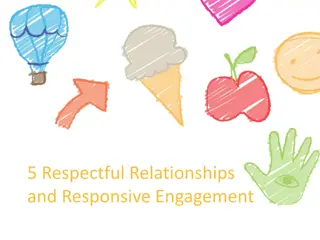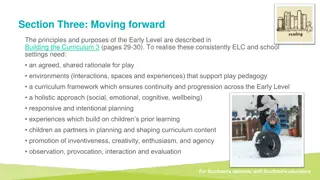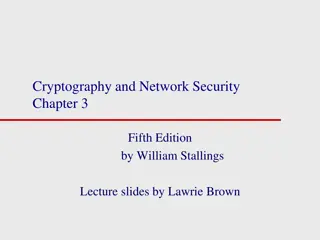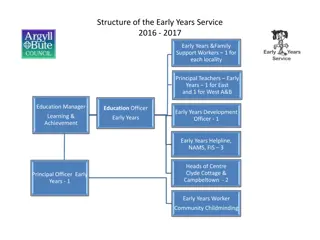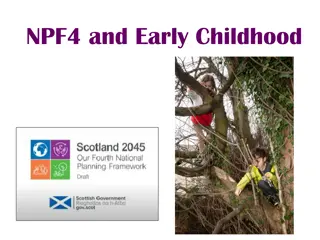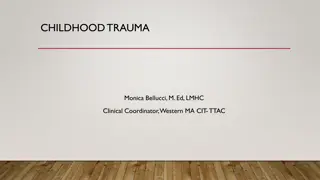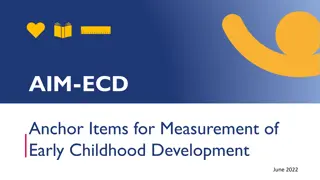Exploring the Importance of Block Play in Early Childhood Education
Discover the influential educational philosophies of Froebel and Pratt, emphasizing the value of play in children's learning and development through block building activities. Learn about the significance of unit blocks and large hollow blocks, as well as the cognitive skills children acquire. Explore how children engage in stunt building, pushing their creativity and problem-solving abilities. Enhance your understanding of organizing block play spaces effectively to support children's learning experiences.
Download Presentation

Please find below an Image/Link to download the presentation.
The content on the website is provided AS IS for your information and personal use only. It may not be sold, licensed, or shared on other websites without obtaining consent from the author. Download presentation by click this link. If you encounter any issues during the download, it is possible that the publisher has removed the file from their server.
E N D
Presentation Transcript
Block Play Block Building in the Early Years
Froebel Frederich Froebel was the founder of Kindergarten Education. He believed in the value of play to shape behaviour and aid in children's intellectual and emotional growth. Froebel believed that even very young children could learn scientific, artistic and natural principles by playing with various physical objects, which he called gifts . One of Froebel's gifts was a set of eight blocks that could be formed into a cube. Froebel intended children to explore the idea of relationship between the part and the whole. To find out more about the Frederich Froebel s philosophy click here Kieff, J. and Wellhousen, K. (2001) Provenzo, F. Jnr. (2009)
Pratt Caroline Pratt developed teaching methods that focused on play. Pratt was influenced by Froebel s kindergarten philosophy that suggested that children s play and activity were central to their individual growth and development. Her philosophy of teaching was based on the children s interests, and through play she allowed them to learn experimentally through their experiences in their immediate environments. Pratt rejected the idea of a fixed curriculum and allowed children to freely choose their play projects. She filled the classroom with play materials such as blocks and loose parts. Pratt has been credited for developing the wooden unit blocks, similar to the blocks used by Froebel. Froebel (1782-1852) and Pratt (1867-1954) each therefore developed a theory which supported the importance of children learning through active engagement in meaningful play. Bruce, T. (Eds) (2012)
The Blocks Unit blocks: The most basic blocks are made from solid hardwood so they will last for years, if not a lifetime. They are called "unit blocks" because they are built on the same basic standard of measurement. Each block is a fraction of the standard unit (such as a quarter unit or half unit) or a multiple of the standard unit (such as a double unit or quadruple unit). Large hollow blocks: These blocks are large enough that young children will need to carry them with two hands. The blocks are large enough for a child to stand on and can be used to build life-sized structures. They are hollow in order to reduce their weight. Large hollow blocks may have either open or closed edges. Stunt Building: This involves the children taking a building technique and pushing it to the limit, for example, building a tower so high that they need to use a chair to add blocks to the top and people to assist so that it maintains its balance. Children discover by doing this the limits of the blocks and can apply the skills to solve problems within building. Kieff, J. and Wellhousen, K. (2001)
Environment, Space and Storage Children learn many things from unit blocks. The blocks are designed to be proportional in size to help children learn maths and other skills. Some of the maths skills they learn are counting, comparison of length and width, names of shapes, and how to combine some geometric shapes to make other shapes. They are learning the basics of addition when they discover that two short blocks will be the same length as the next size block. Make sure that blocks are sorted and neatly arranged. Always categorise blocks neatly when putting them away. Place them with the long side in view to make their size easily seen. Kieff, J. and Wellhousen, K. (2001)
Stages of Block Play Children s play with blocks will change over time as their understanding and experience deepens. Knowledge of these stages allows practitioners to support children s learning and provide what they need in order to take the next step. Stages of block play include: Carrying Stacking Bridging Enclosures Building complex structures Dramatic Play with complex structures
Carrying Children explore the blocks using their senses they examine them closely, touch and taste them. Children hold one block in each hand and hit them together, exploring the sound. Children carry the blocks from place to place. Children knock down structures built by others. No actual building takes place within the carrying stage. Kieff, J. and Wellhousen, K. (2001)
Stacking Children have a need to build rows and towers repeatedly they do this before moving on to build other structures. Children can haphazardly stack blocks until they fall. Children can line blocks up, pushing them into an even line. When children have mastered building rows and towers they build them in multiples this can resemble floors and walls. At this point children move on to the next stage. Kieff, J. and Wellhousen, K. (2001)
Bridging This is illustrated by children bridging or roofing the space between two upright blocks the upright blocks need to be placed the correct distance apart to support the bridging block or the bridging block needs to be long enough. Children can become confused at this stage if they place the upright blocks at either end of a base block and then the bridging block is not long enough when they have considered them all to be the same size. Children who are persistent at this stage will be successful quicker than those that go back to the previous stage of building towers. When a child has learned how to bridge they repeat it over and over again. Children use this skill to build bridges on top of bridges. Kieff, J. and Wellhousen, K. (2001)
Enclosures Children use blocks to enclose space. They need to have a cognitive understanding of knowing which direction to turn the blocks to enable this to happen. Otherwise, they place the blocks end to end like a road. Children need to practice to enable them to take four blocks and create an enclosure in the shape of a square. When children can successfully do this they repeat it over and over, making many enclosures. Children then begin to experiment with the size and shape of them and begin to connect one to the other. Kieff, J. and Wellhousen, K. (2001)
Building Complex Structures Children are fascinated with symmetry, balance and patterns they use the blocks to form patterns and symmetrical designs. Children use the blocks to express their creativity the building techniques they have learned in the other stages are evident in their structures. Children use a larger number of blocks they incorporate towers, rows, bridges, enclosures and patterns in the same structure. Children have mastered the basics of construction and design using blocks. Children name their structures whilst they are building or after (not yet before) this is usually in connection with staff questioning, what are you building? Kieff, J. and Wellhousen, K. (2001)
Dramatic Play with Complex Structures Children tell you what they are going to build before they start this illustrates that children have a plan for their play with the blocks being used to set the scene. The buildings children make resemble familiar structures. The design features of the building represent the actual structure, for example, windows or a drawbridge. Children create and add their own accessories to the structure, recycled materials (loose parts) supporting the dramatic play and their interpretation of how the world works. Kieff, J. and Wellhousen, K. (2001)
Schematic Play Schemas are patterns of repeated behaviour which emerge through children s play and allow them to explore their ideas and thinking. Block play provides children with a way to explore a variety of schemas as they continue to build on their prior learning. Knowledge of schemas allows practitioners to identify emerging patterns of behaviour in play and support children s exploration.
Schema Trajectory: Children are learning about height, speed, distance and how things move. Rotation: Through their explorations children develop an understanding of how objects and themselves turn. Transporting: Through exploration children will be learning about distance, journeys and places, as well as mapping where things are. Enveloping: Children are exploring with the idea of completely covering objects, spaces and themselves. Enclosure: Children are finding out about size, shape, measurement and volume of spaces. Positioning: Children are learning about order, sequencing, classification, shape, symmetry and mapping. Orientation: Children are learning about how things look from different angles. Connection: Children are finding out about how to join and fasten things together in different ways. Core and Radial: Children are finding out about how to extend themselves Bruce,T.(Eds)(2012)
Challenge Questions How well do our practitioners support children to persevere with inquiry learning, start a project and continue it over time? How well do our practitioners allow time and space for children to be involved in their own schematic play? Look at how your blocks are displayed for children. What messages are children being given about size and mathematical relationships? In what ways does our environment support children s creativity, curiosity and inquiry? In what ways could it be improved? Want more challenge questions to support discussion and self evaluation? Click here
References Bruce, T. (Eds) (2012) Early Childhood Practice: Froebel Today. Sage Publications Ltd. Kieff, J. and Wellhousen, K. (2001) A Constructivist Approach to Block Play in Early Childhood. Delmar Cengage Learning. Provenzo, F. Jnr. (2009) Friedrich Froebel's Gifts: Connecting the Spiritual and Aesthetic to the Real World of Play and Learning. American Journal of Play. 2 (1) pp.85-99.







